After working on a nagging insurance industry problem on and off for three decades, an actuary, who is also a software engineer, recently devised the solution—a new model of the occurrence form for liability insurance policies covering latent exposures.
Executive Summary
The combination of an actuary with unique skills, a firm with a unique business model and developments in technology and in the case law around liability trigger theories have all come together to pave the way for a solution to a problem that seemed impossible for decades. Praedicat’s VP of Modeling, Melissa Boudreau, has created a model of the occurrence form to give insurers and reinsurers a view into where latent liability losses might be allocated to policy years and towers of insurance. While her innovation gives clarity into an issue arising out of the past, her personal journey to solving may be a model career for future actuaries, Praedicat’s CEO believes.“We needed to design and code this pretty much from the ground up,” said Melissa Boudreau, chief actuary and vice president of modeling for Praedicat, a Los Angeles-based InsurTech analytics company. “So I did that. I called it my night job because that’s when I did most of the work,” she said matter-of-factly.
But the task was by no means a simple one, especially given the rigors of her day job, which include managing a modeling team and meeting with clients and internal teams of product managers and client-facing sales professionals to understand—and respond to—market priorities. In her words, the meetings take place “to understand what the urgent problems are and how we can truly revolutionize how insurance works given the tools we have.”

Boudreau referred to the revolutionary nature of Praedicat’s offerings and its business model several times during an interview that took place just a day after she completed a three-week European trip to meet with clients there. Offerings include a text-mining software platform (CoMeta) and a cloud-based liability catastrophe portfolio modeling platform (Oortfolio), which were created before she joined the firm. The latest one—the model of the occurrence policy form probabilistically allocating liability losses among defendants and policy years—is revolutionary for the industry but not entirely groundbreaking for Boudreau personally. In fact, it’s something she tackled during the early days of her actuarial career in the late 1980s, although she didn’t quite get all the pieces to work as well as they do today.
“This was during the era where the asbestos and the pollution Superfund litigation were in full swing,” she said, recalling the time she spent with Tillinghast (now Willis Towers Watson) to build two pollution models—one for underground storage tanks and another for Superfund litigation.”
“These were probably the first times that the industry had to face issues of gradual exposure—latent exposure causing both property damage and bodily injury,” she said. “The models we built reflected all of the available information about how much the cleanup costs would be, as well as a model for actually allocating them” to years and policies. But “the courts were basically still inventing the allocation schemes,” she said, noting that the explosion of case law in the intervening years is one factor that allowed the new model to really come to fruition.
 After some early lead cases in the mid-80s, the pace picked up through the 90s and early 2000s. “Many states have gotten through appeals process, and they’ve gone up through state’s supreme courts. Some states have pretty much established” which trigger theory fits its state insurance law, while “others have been fuzzy about it, and some states, basically, have no guidance on it yet.”
After some early lead cases in the mid-80s, the pace picked up through the 90s and early 2000s. “Many states have gotten through appeals process, and they’ve gone up through state’s supreme courts. Some states have pretty much established” which trigger theory fits its state insurance law, while “others have been fuzzy about it, and some states, basically, have no guidance on it yet.”
Another major difference between then and now is that there is a lot more computing power 30 years on. “The models that we build today actually give a much finer grain view of the risk. That’s exactly what enables them to be valuable for underwriting,” Boudreau said.
A third contributing factor is unique to the Praedicat. “Praedicat is the first place that decided to take on this problem using a high resolution, ground-up, specialist-based approach,” she said. “People have been aware of this problem since forever, but most have abandoned it as just too hard, intractable—just not possible,” she said. “We brought in all the different disciplines necessary to inform all the steps in estimating what both the vulnerability of the hazard and the likelihood of the hazard is, including epidemiologists, bioscientists, economists, and actuaries.”
Robert Reville, Praedicat’s chief executive officer of Praedicat, would probably be the first to point out that the occurrence model development would not have been possible without another important ingredient—Boudreau’s unique skillset. “She’s amazing. She is a Fellow of the Casualty Actuarial Society with 30 years of experience as a casualty actuary and a self-taught software engineer who has led software engineering teams,” Reville said. “I haven’t seen that anywhere else,” he said.
“She is the one who designed our whole approach to conquering the occurrence form. She’s rolling it out and working with all our clients. This force of nature—a modern actuary with deep knowledge of technology, and a leader of technology—is a big part of the story,” he said.
A Self-Taught Software Engineer
 Boudreau said she started her career as actuary at a standard insurance company doing reserving and large-account pricing in the 1980s, after graduating with a degree in mathematics from an engineering school. “Insurance is really something I discovered in college. I knew I was going to be in math. Anyone that knew me at age four knew I was going to be in math,” she said.
Boudreau said she started her career as actuary at a standard insurance company doing reserving and large-account pricing in the 1980s, after graduating with a degree in mathematics from an engineering school. “Insurance is really something I discovered in college. I knew I was going to be in math. Anyone that knew me at age four knew I was going to be in math,” she said.
After moving on to work on the Superfund model at Tillinghast, she did independent consulting for a while, returning to Tillinghast in the 1990s to lead the development of their capital models and a team of modelers split between the U.S. and Europe. More recently, between 2008 and 2013, her focus was on Solvency II work in Europe and in Mexico—some of it with analytics firm SAS and some with consulting company Actuarial Resources.
What attracted her to join Praedicat last December to build the latent bodily and liability catastrophic modeling capability?
“It may be in all of the places that I’ve been in the past almost 35 years, the best fit between the different things that I can do and the needs for it, combined with something which is truly revolutionary,” she said, noting that in addition to teaching herself to be a software engineer, she “did a lot of hands-on development, and [even] more time actually running software operations.” She also achieved her FCAS certification in 1988, a recognition of her technical understanding of the insurance business.
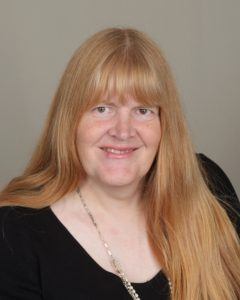
“Historically, property and casualty actuaries have analyzed claim history without really much regard to the drivers behind it. In the future, they’re going to be analyzing the drivers of risk directly, the claims only incidentally, and they can’t do that if they don’t understand what they are.
Melissa Boudreau
Boudreau said she also brought specific domain knowledge to her work—some in fields like meteorology and chemistry, which she studied independently at “the University of Melissa.”
As for software engineering, “the way I taught myself that is really simply by being insatiably curious,” she said. “In my first job as a reserving actuary, I had to build software that did reserve calculations. So naturally I wanted to, first of all, figure out how do I do this to get it right? How do I do it so that I can do more work, more quickly–so the process of using the product is simpler? What tools do I have at my disposal? How do they work?
“Back in that day it meant I read a lot of software manuals, a lot of hardware manuals, and experimented, generally, in my spare time. The tools have changed over the years but the basic idea is that I know what the problem is, I find the information, and learn as much about it as I can, and then I try things until I find something that works. I’m always looking to make it better.”
Boudreau explains that a software engineer is someone who understands the entire process of building software, in contrast to a software developer whose skill is programming but they may not necessarily have to understand software architecture and the whole systemic part of how software actually works. “A software engineer has to understand how is software is actually put together, how is it designed, how does it fit in, how do you bring technology together in all of that.”
Boudreau’s career journey and her ability to communicate her expertise have won over her boss, Reville, and clients. “We had one client say we are not going to sign this renewal unless you do what Melissa has said needs to get done,” Reville revealed. “She impressed them because she could both do the modeling and communicate with them in a language they can understand,” he said, suggesting that her increasingly important skillset is perhaps a “window into where the actuarial profession is going to go.”
Times are changing. “When I started doing modeling in the late 80s, I was distinctly an outlier,” Boudreau said. “Very, very few actuaries did that. Today, it’s still a minority but not a microscopic [one]. It’s a tool in the toolbox. Modeling is on the actuarial exams…but it’s still not the norm or everyday activity for an actuary.
 “My advice for somebody entering the profession today is, first, learn as much as you can about statistical data analytics, data science methods as possible. They will both keep you relevant and expand your possibilities as a quantitative analyst.
“My advice for somebody entering the profession today is, first, learn as much as you can about statistical data analytics, data science methods as possible. They will both keep you relevant and expand your possibilities as a quantitative analyst.
“Then, make sure that you understand as much as you can about the business environment and the drivers. Historically, property and casualty actuaries have analyzed claim history without really much regard to the drivers behind it. In the future, they’re going to be analyzing the drivers of risk directly, the claims only incidentally, and they can’t do that if they don’t understand what they are.
A final world of advice: “The ABC rule, always be curious.”
Assuming her position in the liability space among modeling pioneers like Karen Clark, a recognized expert in property-catastrophe modeling, Clark and Boudreau are part of another minority group—women in STEM fields. Asked if she’s ever had to overcome credibility issues with customers, colleagues or managers, Boudreau says it hasn’t been an issue.
“I think the main reason is that I’ve always been in highly technical disciplines where there’s not a whole lot of people doing what I’m doing. I’ve always made a point to make sure that when I’m talking to clients or people that would be in a position to be skeptical that by the time we’ve been talking for 15 minutes, I’ve made it clear I understand your business problem, I understood it in detail, I understood it in nuance, and the deeper you dig the more satisfied you’ll be.”
“You certainly get skepticism but I’ve yet to encounter any that I would say that if you put a guy in the same position would have had a different response. I guess the short answer is that I’ve learned pretty early on how to present in a powerful enough way to neutralize that before it ever has a chance to take root.”
The Model and Its Value to Underwriters
Boudreau explained the value of the occurrence model in some detail during the Carrier Management interview, complimenting information she provided in an article she co-authored with Reville. (See related article, “Latency Catastrophe and the Occurrence Form“)
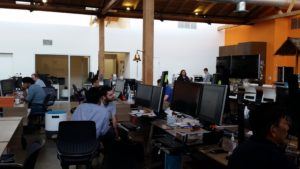
Clients she communicates with have varying levels of expertise on different aspects liability exposure and modeling, some more well-versed in science, like representatives of chemical companies, and others in insurance and reinsurance. Within insurance and reinsurance companies, users of Praedicat information include day-to-day line underwriters looking for insights into the riskiness of submissions, the staff underwriting function determining underwriting guidelines, and risk managers interested in understanding risk aggregations.
“At the executive level, we’re looking at how companies can grow their business, how they can accept risks that they would have been afraid of before because they didn’t understand them, how they can offer new insurance products that better meet the risk management needs of their corporate clients than the current crop of products do, which is the Praedicat holy grail,” she said.
“We can actually now look at a single company and say across several dozen chemical substances, this is the range of possible litigation outcomes that we’ve modeled for single company X.” In other words, “we can say that there’s a 100-year return period for this company or a 100 year event might be a $400 million loss, or it may be that 20-year return period may be a $4 billion loss. We can do that, which informs underwriters, especially excess underwriters, that are figuring where in the tower to participate.”
“If we can indicate that your 100-year loss is only a couple of $100 million and you’re sitting up at $600 million today, you can actually move down, and pick up more premium with a very, very small likelihood that you’re ever going to take a loss on it.”
Reville uses the example of an underwriter of a canning company that has BPA (Bisphenol A ) exposure. Maybe the insurer has written policies for the companies for 19 years on an occurrence form, and is looking at how to approach the risk in year 20. Should they assume all the BPA claims are assigned to year 20? Or all allocated back to prior 19 years?
Boudreau “built a very rich probabilistic model for it that essentially says that it could be any one of the 20 years and there is distribution around what year it’s likely to end up in and it varies depending upon the risk,” he said.
“Early on, when we first tried to develop our solution, I don’t think we even thought through how complicated this problem of modeling the occurrence form was. Our earliest version ‘got it wrong’ in a sense. We were really conservative. So we ended up having much higher losses. And then another version was too far the other way. And now, finally, we have an answer that we and our clients are happy with.”
 Boudreau simplifies the components of the latent catastrophe, or lat cat, modeling process, by drawing distinctions with natural catastrophe, or nat cat. In nat cat, she noted that the perils are earthquakes, hurricanes, ice storms, volcanoes. “You can enumerate perils. The number is small but each peril has its own profile to it.” In lat cat, the inventory of perils consist of “litagion agents,” most of which are chemical substances, some industrial practices. “You could think of BPA as analogous to hurricanes, DEHP could be analogous to earthquakes,” she said. “Our model currently has 71 of them, a number that will expand fairly dramatically,” in contrast to the few perils associated with property models.
Boudreau simplifies the components of the latent catastrophe, or lat cat, modeling process, by drawing distinctions with natural catastrophe, or nat cat. In nat cat, she noted that the perils are earthquakes, hurricanes, ice storms, volcanoes. “You can enumerate perils. The number is small but each peril has its own profile to it.” In lat cat, the inventory of perils consist of “litagion agents,” most of which are chemical substances, some industrial practices. “You could think of BPA as analogous to hurricanes, DEHP could be analogous to earthquakes,” she said. “Our model currently has 71 of them, a number that will expand fairly dramatically,” in contrast to the few perils associated with property models.
(Editor’s Note: Litagion is a word Praedicat coined from the words litigation and contagion to represent the potential for future mass actions involving multiple plaintiffs against multiple defendants alleging harm from a single substance. See related article, “Praedicat: Mining Data From Published Science to Spot the Next Casualty Cat“)
In a property model, the next step is to ask what is the exposed property and how vulnerable is it to this peril? In lat cat, “our analog—for bodily injury damages—is how many people are exposed to this chemical or practice through different pathways?” After working through that funnel using epidemiological research and modeling, “the next level in the funnel asks how many of the harmed are likely to initiate a claim,” she said.
 Then, the last question asks how likely it is that the claimants succeed,” she said, noting that the answer is partly based upon the state of science—whether there is indeed a harm that is very readily tied to a substance like mesothelioma to asbestos, or “whether it’s a very highly prevalent harm with lots of causes such as morbid obesity, which might be caused by phthalates but might be caused by 98 other things.”
Then, the last question asks how likely it is that the claimants succeed,” she said, noting that the answer is partly based upon the state of science—whether there is indeed a harm that is very readily tied to a substance like mesothelioma to asbestos, or “whether it’s a very highly prevalent harm with lots of causes such as morbid obesity, which might be caused by phthalates but might be caused by 98 other things.”
Lat cat modeling also deals with the allocation of responsibility, a question that can’t arise for a first-party cover like property. If a hurricane damages a property,” it’s either covered by insurance subject to a deductible and limit, or it’s not,” determining the payout of a claim. In the casualty world, even if a model predicts that a particular group of claimants who develop mesothelioma will be compensated, “the amount of the compensation is determined based upon economic projections and has some uncertainty with it….In asbestos, there were hundreds implicated, and upwards of 100 declared bankruptcy because of it.”
After apportioning damages to a potentially responsible parties, the next step is to apportion them to policy years. “If we’re modeling hurricanes during the 2017 season, it’s very clear what homeowners policy is going to respond to that—the 2017 policies,” she said. But for liability, even after it is determined that Johns Manville is going to have a $4 billion share of the collective asbestos claimants, now the question for their insurers from 1955 to today, which ones are implicated and for how much.
“That’s just a business rule in nat cat. But it’s a sophisticated modeling effort that brings in legal research and actuarial techniques into doing that for occurrence type business,” she said.
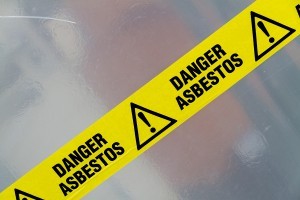 Boudreau focused in on the Manville example to explain various trigger theories, like manifestation and exposure triggers, that have developed in the courts. Suppose a miner was exposed to asbestos fibers from the time he started working in 1955 until the mine closed in 1980, and then was diagnosed with mesothelioma in 2001, she said, proposing a hypothetical. “Was the occurrence the exposure to asbestos—from 1955 all the way to 1980? Was it the manifestation of mesothelioma in 2001? Was it some alternative?
Boudreau focused in on the Manville example to explain various trigger theories, like manifestation and exposure triggers, that have developed in the courts. Suppose a miner was exposed to asbestos fibers from the time he started working in 1955 until the mine closed in 1980, and then was diagnosed with mesothelioma in 2001, she said, proposing a hypothetical. “Was the occurrence the exposure to asbestos—from 1955 all the way to 1980? Was it the manifestation of mesothelioma in 2001? Was it some alternative?
“Courts have different opinions on the subject, and lawyers have advanced at least eight different theories. There are four commonly used today, she said. The exposure trigger would say 1955 to 1980; continuous trigger, 1955-2001, and some go right up to the time of the claim.
The next question is the allocation to the different policies that were in effect—primary, umbrella, excess: How much of the loss is going to be allocated to each one of those, and how much falls back to Johns Manville?
“Our model combines legal research into the historical and current-favored trigger theories, understanding that the decisions can be different based upon nuances of the policy language,” she said, noting, for example, that the pre-1986 commercial general liability policy had very different language from the current one.
Summing up the entire mess of possibilities, she concluded, “The occurrence form, when the occurrence is not a single event is a beast.”




















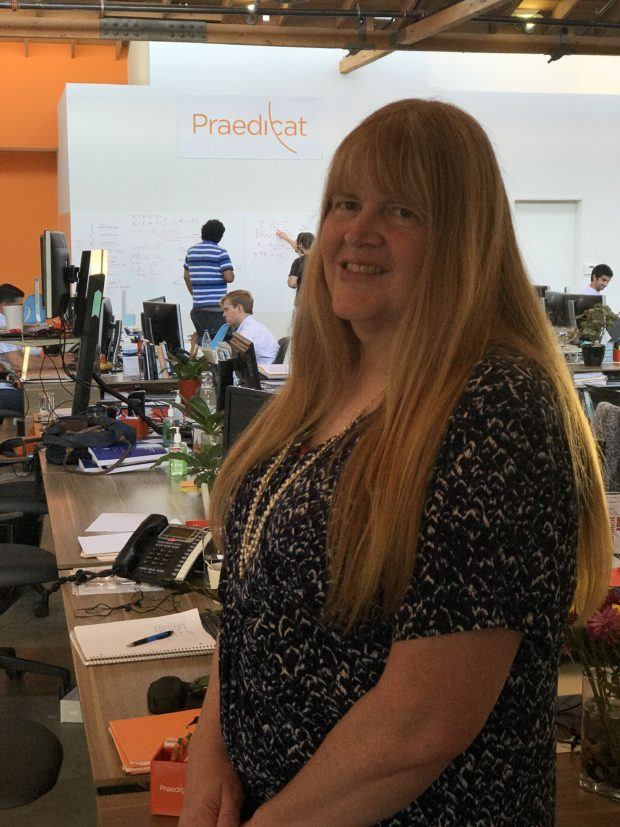
 Viewpoint: Mapping Evolving Regulatory Terrain for MGAs, MGUs and Other DUAEs
Viewpoint: Mapping Evolving Regulatory Terrain for MGAs, MGUs and Other DUAEs 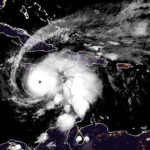 Global Warming Likely to Push Future Hurricane Seasons to Extremes: Study
Global Warming Likely to Push Future Hurricane Seasons to Extremes: Study  Berkshire Hathaway Announces Leadership Appointments: New CEO at GEICO
Berkshire Hathaway Announces Leadership Appointments: New CEO at GEICO  New York Times Sues Perplexity AI for ‘Illegal’ Copying of Content
New York Times Sues Perplexity AI for ‘Illegal’ Copying of Content 






